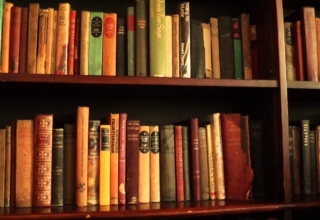
Similarly, we must remember that the content of Bion’s Alpha elements come out of Beta content—so are not immune to bias or the intrusion of unconscious content. Put in broader, psychoanalytic terms, the Ego derives its energy from the Id and Superego. As a result, the Ego must always make compromises in its engagement with reality: the piper must be paid. The Id and Superego must be acknowledged if Ego is to gain its energy.
Bateson’s Higher Order Thinking: Beyond this basic suggestion that we slow down and find a time and place for reflection, there is the matter of engagement in higher order thinking and reasoning. In Kahneman’s world this refers particularly to reflecting on the operating heuristics. Do we overestimate the probable occurrence of certain highly dramatic outcomes? Is there a good reason for us to rely on simply stated analyses of complex situations (prevalent in the VUCA-Plus environment)? Do we always turn to the same sources for advice and avoid perspectives that are troubling, contradictory or anxiety-producing (particularly unwelcomed when we are trying to reduce our anxiety)?
Many years ago, the remarkable polymath, Gregory Bateson wrote about first and second order thinking and learning.[xxvi] First order learning and thinking concerns the ability to improve on what we are already thinking and doing. This form of learning and thinking is dominant in our daily life – and relates directly to Kahneman’s heuristics (and Bion’s Beta elements). Conversely, second-order learning and thinking is about consideration of alternative actions and alternative ways of framing one’s current experiences.
Even more importantly, second order thinking and second order learning are about thinking-about-thinking and learning-about-learning. We pause, slow down our thinking, and consider what lies behind the way we are now thinking and what are the outcomes of our current way of thinking. Metabolism, in other words, is about stepping back and reflecting on the way(s) in which we are perceiving, feeling about, and acting in our world. In Bion’s terms, it is about valid learning from experience.
What might second-order thinking and second-order learning look like in an actual organizational setting? We turn to an educational organization with which one of us has consulted. It is a liberal arts college that offers undergraduate degrees in both the arts and sciences. As is the case with the faculty at most academic institutions, there is a major gulf in the way teaching occurs in these two divisions: as noted many years ago, the arts and sciences constitute two different worlds. The faculty members residing in these two worlds embrace quite different ideas about how learning takes place (other than their shared belief in the value of lecturing). The sciences rely on learning in the laboratory, while the arts rely on learning in the studio.
It is traditionally assumed that improvement in the teaching engaged in each of these worlds requires doing a better job of designing and conducting the laboratory (for faculty in the sciences) and designing and conducting the studio (for faculty in the arts). This improvement requires first order learning and change. Rather simple heuristics can readily be applied: improve what you are already doing and/or do what you are already doing more often (or less often). First order learning and change is alive and well. Attend a workshop on new ways to demonstrate combustion in the lab. Extend the studio to two hours (or reduce the Thursday studio by thirty minutes). Meet with members of your own department to share best practices.
What about second order learning and change? At this two-day liberal arts college faculty retreat, a somewhat “radical” process was encouraged and facilitated. It was suggested that a pedagogical bridge be built between the arts and sciences. What would a chemistry studio look like? Could there be a painting laboratory? Perhaps we could also bring in the other humanities: what about a history studio? Sparks of innovative thinking began to ignite for faculty members from both the arts and sciences.
Studio learning often involves students sitting around a still life and sketching the assembled objects from different perspectives. Couldn’t physics students or history students explore a specific stellar or political event from different perspectives? What about a sculpture laboratory? Different materials could be used to create a particular sculpted work. How does each material influence the sculping process and the outcome? This would be an interesting experimental question to address in a sculpture laboratory.
This excursion into bridge-building across disciplines exemplifies second order learning and change. Rather than doing the same thing better or more often, we are invited to do something different and to learn from this different action. In the case of the faculty at this liberal arts college, it was not only a matter of teaching in a new manner. It was also a matter of examining current practices from a fresh perspective. Faculty members in the sciences who have been engaged in laboratory teaching for many years, now began to appreciate and share with other faculty members the lessons learned about laboratory education over the years. A similar impact was evident among the arts faculty and studio learning.
Download Article















